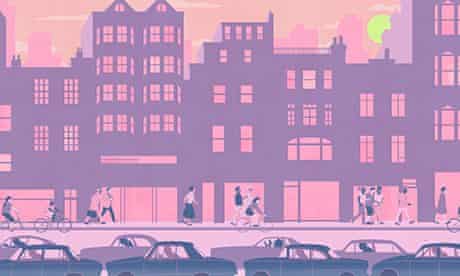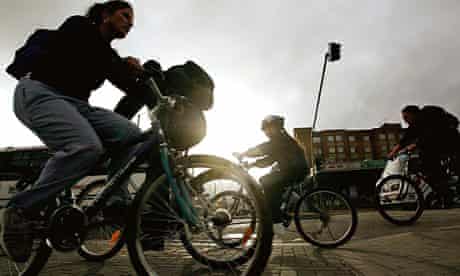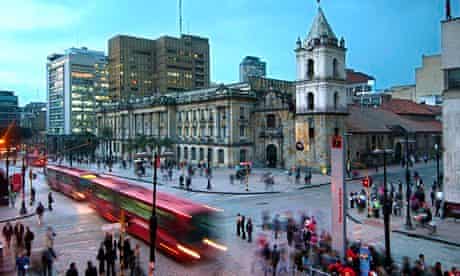Bicycle Austin forum
THIS FORUM WAS RETIRED ON 12/5/25. It's still available for reading, but not for posting.
You are not logged in.
- Topics: Active | Unanswered
Pages: 1
#1 2016-12-01 06:00:32
- AusTexMurf
- Member
- From: South Austin
- Registered: 2008-11-21
- Posts: 439
The Secrets of the World's Happiest Cities
The Secrets of the World's Happiest Cities
'City life is as much about moving through landscapes as it is about being in them.' Illustration: Francesco Bongiorni for the Guardian
Charles Montgomery
Two bodyguards trotted behind Enrique Peñalosa, their pistols jostling in holsters. There was nothing remarkable about that, given his profession – and his locale. Peñalosa was a politician on yet another campaign, and this was Bogotá, a city with a reputation for kidnapping and assassination. What was unusual was this: Peñalosa didn't climb into the armoured SUV. Instead, he hopped on a mountain bike. His bodyguards and I pedalled madly behind, like a throng of teenagers in the wake of a rock star.
A few years earlier, this ride would have been a radical and – in the opinion of many Bogotáns – suicidal act. If you wanted to be assaulted, asphyxiated by exhaust fumes or run over, the city's streets were the place to be. But Peñalosa insisted that things had changed. "We're living an experiment," he yelled back at me. "We might not be able to fix the economy. But we can design the city to give people dignity, to make them feel rich. The city can make them happier."
I first saw the Mayor of Happiness work his rhetorical magic back in the spring of 2006. The United Nations had just announced that some day in the following months, one more child would be born in an urban hospital or a migrant would stumble into a metropolitan shantytown, and from that moment on, more than half the world's people would be living in cities. By 2030, almost 5 billion of us will be urban.
Peñalosa insisted that, like most cities, Bogotá had been left deeply wounded by the 20th century's dual urban legacy: first, the city had been gradually reoriented around cars. Second, public spaces and resources had largely been privatised. This reorganisation was both unfair – only one in five families even owned a car – and cruel: urban residents had been denied the opportunity to enjoy the city's simplest daily pleasures: walking on convivial streets, sitting around in public. And playing: children had largely disappeared from Bogotá's streets, not because of the fear of gunfire or abduction, but because the streets had been rendered dangerous by sheer speed. Peñalosa's first and most defining act as mayor was to declare war: not on crime or drugs or poverty, but on cars.
He threw out the ambitious highway expansion plan and instead poured his budget into hundreds of miles of cycle paths; a vast new chain of parks and pedestrian plazas; and the city's first rapid transit system (the TransMilenio), using buses instead of trains. He banned drivers from commuting by car more than three times a week. This programme redesigned the experience of city living for millions of people, and it was an utter rejection of the philosophies that have guided city planners around the world for more than half a century.
In the third year of his term, Peñalosa challenged Bogotáns to participate in an experiment. As of dawn on 24 February 2000, cars were banned from streets for the day. It was the first day in four years that nobody was killed in traffic. Hospital admissions fell by almost a third. The toxic haze over the city thinned. People told pollsters that they were more optimistic about city life than they had been in years....

Colombian students ride their bicycles during 'No car day' in Bogota. The day-long ban on all private car traffic on the city's streets forces residents to use public transportation or bicycles to get to and from work. Photograph: Jose Miguel Gomez/Reuters

Red Transmilenio buses pull into the Museum of Gold station in front of the 16th century Iglesia de San Francisco, Bogota's oldest restored church. Photograph: John Coletti/Getty Images
Offline
Pages: 1
- Registered users online in this topic: 0, guests: 1
- [Bot] ClaudeBot
[ Generated in 0.005 seconds, 7 queries executed - Memory usage: 533.61 KiB (Peak: 563.53 KiB) ]